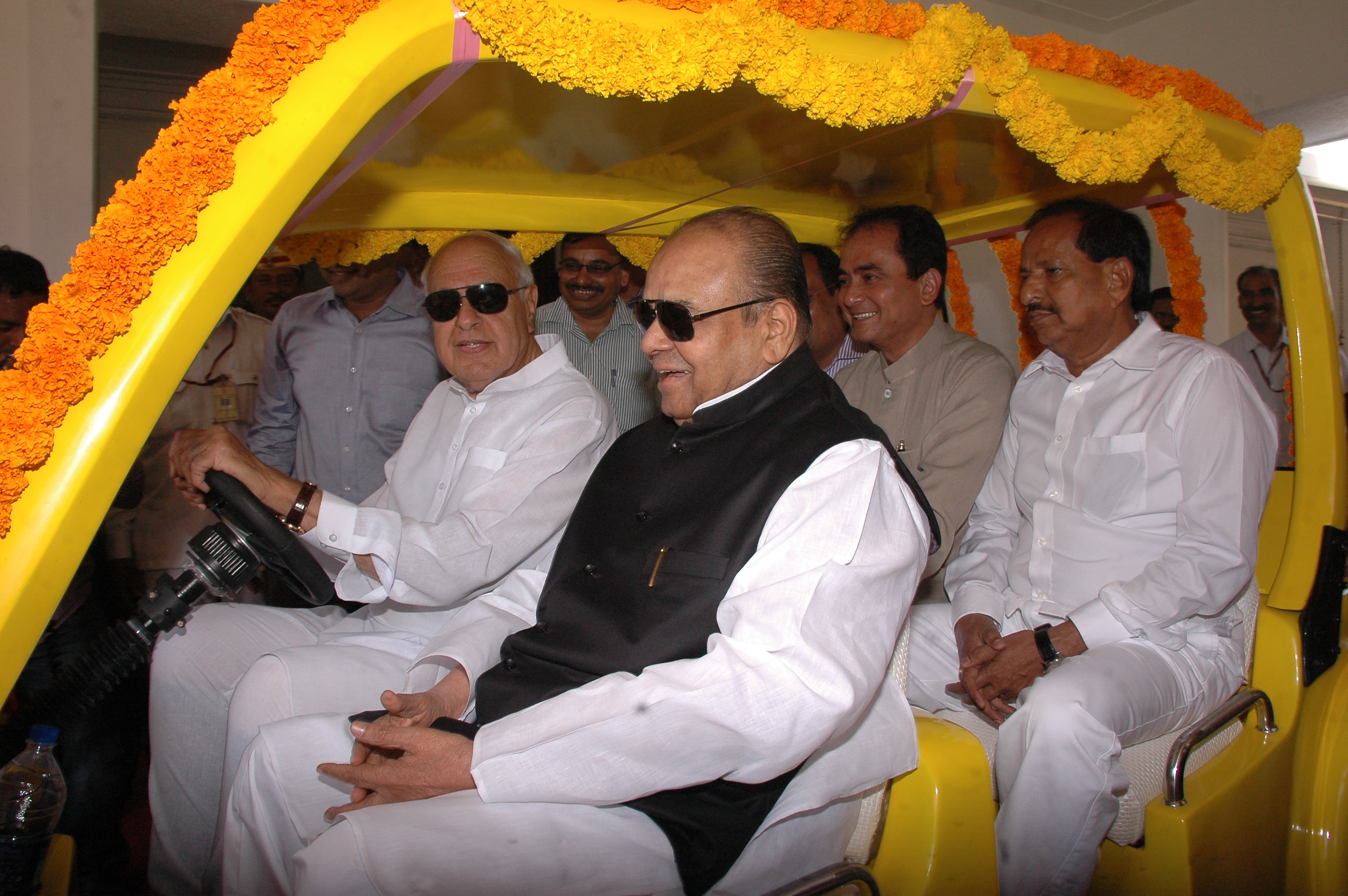Solar Energy
Solar Photovoltaic Programme
Solar Street Light
 |
The Solar Street Lighting Systems Consists of Solar Photovoltaic (SPV) module, a luminary, storage battery ,control electronics, inter-connecting wires/cables, module mounting pole including hardware and battery box .The luminary is based on White Light Emitting Diode(W-LED)/CFL. The luminary is mounted on the pole at a suitable angle to maximize illumination on the ground. The PV module is placed at the top of the pole at an angle facing south so that it receives solar radiation throughout the day, without any shadow falling on it .A battery is placed in a box attached to the pole. |
Electricity generated by the PV module charges the battery during the day time which powers the luminary from dusk to dawn.The systems lights at dusk and switches off at dawn automatically.
Advantages
- It is a stand alone system and works even where there is no grid supply
- Easy to transport and install anywhere and is suitable for remote areas
- Provides lighting for 10 – 12 hours daily without running cost.
- Boon to local bodies as they can save electricity consumption charges
- No need for manual operation as it has automatic switch “on / off” facility
SPV street lights are being installed by the local bodies – Panchayats, Municipal corporations etc. in large numbers by availing subsidy so as to reduce the recurring power consumption charges. Non-profit organizations can also use them for their campuses.
For technical specification click here
http://mnre.gov.in/information/systems-specifications/
Solar Lantern

|
A Solar Lantern is a portable lighting device consisting of a PV module, battery, lamp, and electronics. Battery, lamp, and electronics are placed in a suitable housing, made of metal or plastic or fiber glass. The Solar lantern is suitable for either indoor or outdoor lighting, covering a full range of 360 degrees.PV module converts sun light into electricity, charges the battery which powers the luminaire.Luminaire consists of Compact Fluorescent Lamp (CFL) and an Electronic Circuit. |
Advantages
- It is a pollution free, portable lighting device.
- It is useful during night hours for doing house hold works and study till late in the night.
- Solar lantern is a very simple to use and operate.
- It can provide 3 to 4 hours continuous light depending upon the model and type of the solar lantern.
- For technical specification click here
http://mnre.gov.in/information/systems-specifications/
Solar Home Light

|
A solar home lighting system (SHS) provides a comfortable level of illumination in one or more rooms of a house. The SHS consists of a PV module, control electronics, battery, and luminaire(s). There are several SHS models featuring one, two, or four luminaires based on Compact Fluorescent Lamp (CFL). The system could also be used to run a small DC fan or a 12-V DC television along with the CFL. PV module converts sunlight into electricity, which powers the luminaire(s), which consists of Compact Fluorescent Lamp (CFL) and an Electronic Circuit. |
Battery Operated Vehicle

|
Battery Operated Vehicle- Alternate Fuels for Surface Transportation Battery operated vehicles (BOVs) are run by batteries and are free from noise and air pollution. They are ideally suited for cities are also suitable for use in hospitals, factories, educational institutions, wild life sanctuaries, airports and places of historic importance. BOVs can be operated as public transport vehicles – BOVs are available as passenger cars, 10 seater auto rickshaws and 12 seater vans. MNRE provides subsidy for the same. |
The battery operated vehicles (two wheelers) have the following advantages:
- They have zero emissions and do not pollute the atmosphere.
- They consume only about 1.5 KWhr of electricity to travel 60 km.
- They can go about 30–50 km on a single charge. This capability meets the needs of an average, two wheeler-riders.
- Most are used during the day and can be charged late at night, which is advantageous in balancing the electric power load.
- Electric bikes reduce human exertion. They are structurally simple, convenient to charge, and easy to operate. Users do not need a driver’s license to operate them.
- They are compatible with city roads.
- They will reduce traffic congestion in the cities.
- They will help reduce energy consumption. Their annual operating cost is about 15% of that of motorcycles.
Objectives of Programme -
- Support for dissemination of all types of Battery Operated Vehicles (BOVs), Plug Hybrid Vehicles(PHEVs), Hybrid Electric Vehicles (HEVs) and Electric / Exercise-Bike Generator Inverter (E2BI) for their usages by users for surface transportation.
-
Support for Research & Development projects on advanced high energy density batteries, ultra capacitors, control systems and other components for battery operated electric, plug hybrid and hybrid electric vehicles for surface transportation.
-
Support for pilot project on technology demonstration for Battery Operated Vehicles, Plug Hybrid Vehicles, Hybrid Electric Vehicles and Electric/Exercise- Bike Generator Inverter (E2B1) for field performance evaluation and leading to commercialization.
-
Support for activities related to awareness promotion through education and training, seminars/conferences/symposia in the area of electric vehicles, plug hybrid vehicles and hybrid electric vehicles etc.
Solar Pump
In India, electrical and diesel-powered water pumping systems are widely utilized for irrigation applications. A solar powered pump is a pump running on the power of the sun. It makes efficient use of solar energy and converts it into electrical energy for pumping water to great heights. A solar powered pump can be very environment friendly and economical in its operation. This system operates on power generated using solar PV (photovoltaic) system. The photovoltaic array converts the solar energy into electricity, which is used for running the motor pump set. The pumping system draws water from the open well, bore well, pond etc. The water pumping system can be used to irrigate land, when the water is to be pumped from a depth of well or a pond.
Advantages of Solar Water Pumps:
- It helps in saving Energy.
- There is no fuel cost - as it uses available free sun light.
- No electricity required.
- Can be operated lifelong.
- It is highly reliable and durable.
- Easy to operate and maintain
- It is also useful for clean, drinking water sanitation and also irrigation.
- It reduces the dependence on rain.
- It creates wealth for farmers by increasing no of crops.
Types of Solar Pumps -
There are two main types of solar pumps. Surface pumps sit above ground and move water through pipes. These are handy for moving large quantities of water at a slow pace. Surface pumps are commonly found on farms or large irrigation systems where water needs to be moved from a lake or other body to fields or landscaping. There are also submersible solar water pumps. These units are installed underground, but the solar panels are connected above ground. Submersible pumps are used to move water from inside wells to the surface.
For Technical Specification of Solar Pump kindly follow the below link
http://mnre.gov.in/information/systems-specifications/












